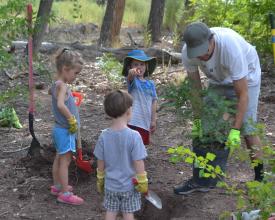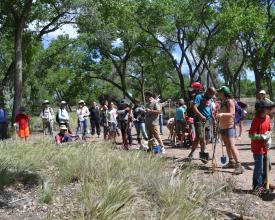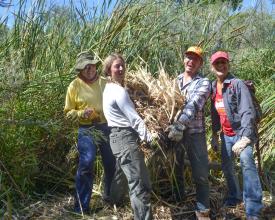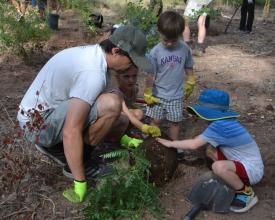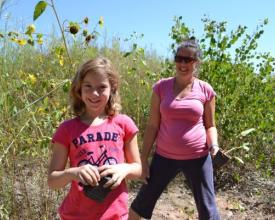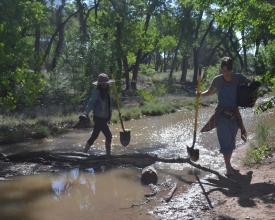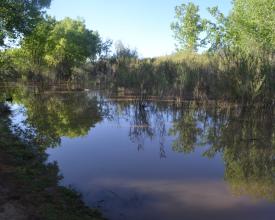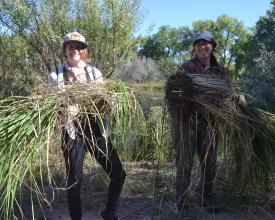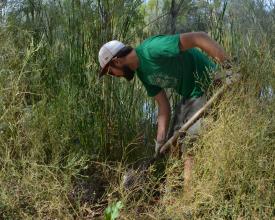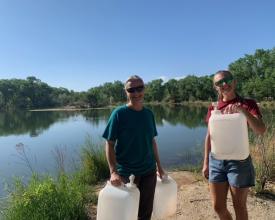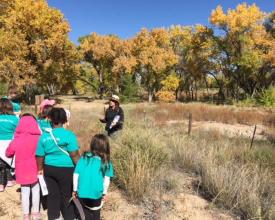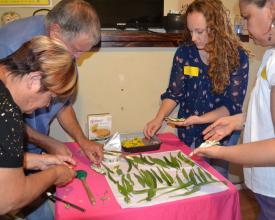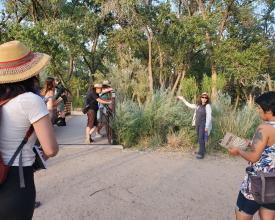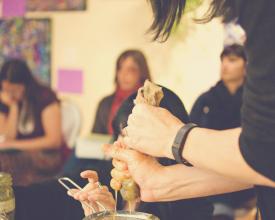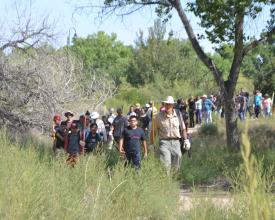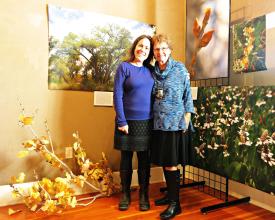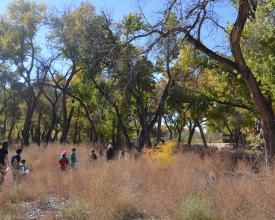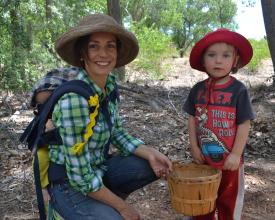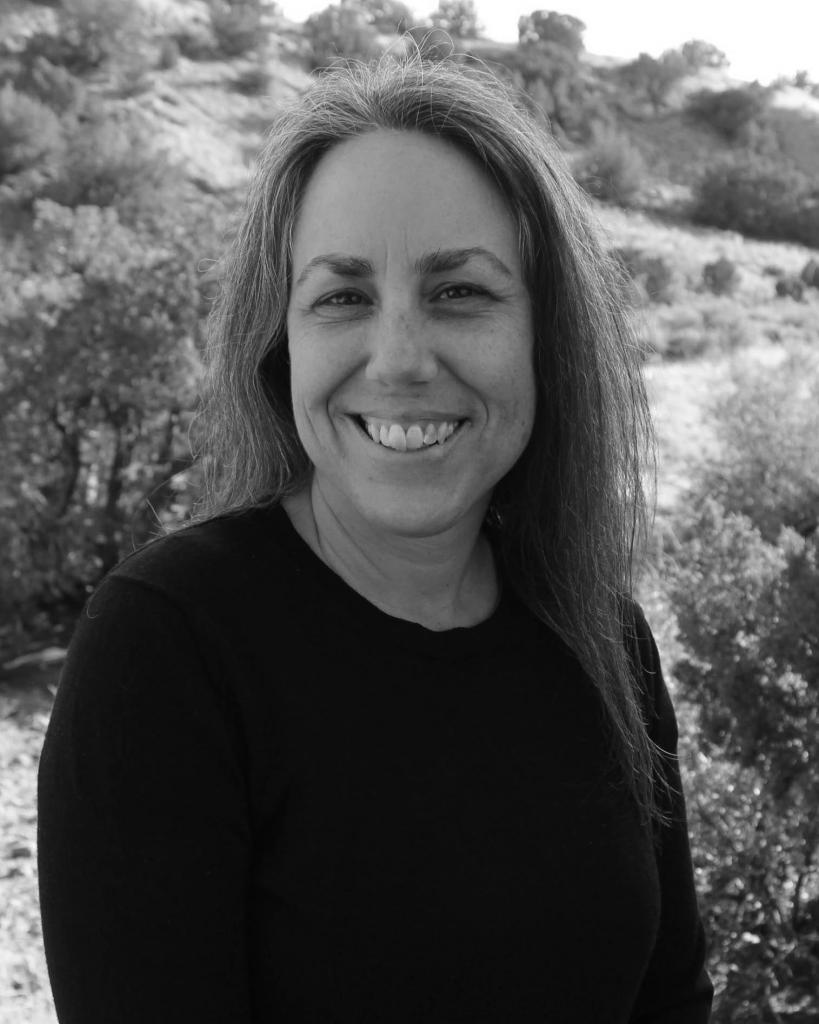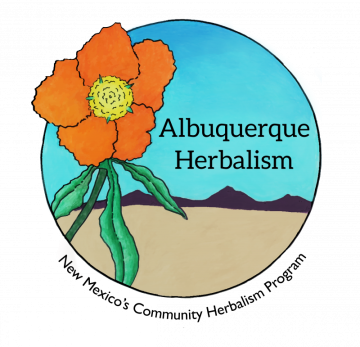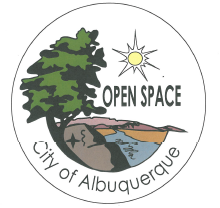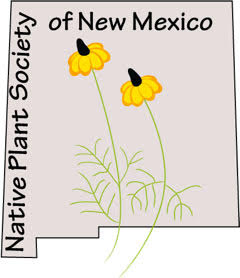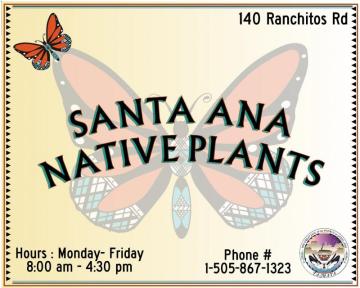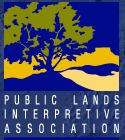
Yerba Mansa Project
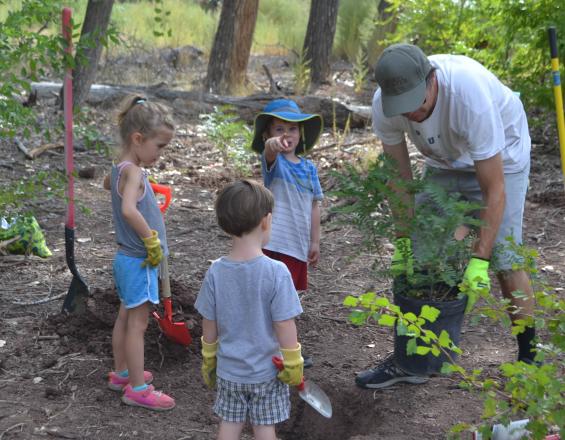
The Yerba Mansa Project (YMP) is an Albuquerque-based community-supported non-profit organization started in 2014 to reestablish the connectivity of people, plants, and the land in the Middle Rio Grande Valley. Our work with the Rio Grande Valley State Park supports the health of ecologically and culturally important native edible and medicinal plants and provides an opportunity for people to reclaim their role in caretaking our land and perpetuating our culinary and healing traditions. Regional botanical healing practices are of increased importance as we navigate an ongoing pandemic and will remain integral to the wellbeing of people moving forward. Our volunteers work to restore some of our most legendary nutritive and healing plants, teach youth and adults about their importance, and help to protect critical habitats and associated cultural knowledge for present and future generations.
Context
Challenges addressed
The YMP was established in response to the degraded ecosystem in the Rio Grande Bosque (riparian environment) and the cultural importance of many declining native plants inhabiting this environment. During the last 150 years extensive flood control measures, water diversion, groundwater pumping, and land conversion have resulted in:
- severe ecosystem alteration,
- rapid decline of native plants including keystone species (cottonwoods Populus deltoides wislizeni and willows Salix sp.),
- proliferation of nonnative invasive species (Tamarix sp., Saccharum ravennae, etc.),
- and increased fire hazard.
This environmental deterioration is directly connected to cultural practices related to native edible and medicinal species such as yerba mansa (Anemopsis californica) and others that rely on surface flows and groundwater. These changes negatively impact residents’ ability to engage in cost-effective culinary and healing traditions that have long supported health and are of increased interest given the pandemic.
Location
Process
Summary of the process
Building blocks of the Yerba Mansa Project intersect as land health and human health are woven together and community partnerships enable progress for both. We see the reciprocal restoration of ecosystems and culture through native edible and medicinal plants. Restoration of native species and critical habitats improves biodiversity and supports ecosystem functions while drawing people into natural environments and into connection with the land. Educating about the roles of native plants in ecological systems and as nourishing healing components in our lives fosters investment in the sustained work of restoration and encourages people to care for critical habitats, steward wild plant populations, and prepare healthful foods and remedies born from local landscapes. While nature-based wellness, herbal remedies, and wild foods have been gaining popularity in recent years, the pandemic has propelled these topics to the forefront as many of us confront the reality of disease prevention, home healthcare, and food scarcity. Planting native edible and medicinal plants and promoting the continuation of local botanical culinary and healing traditions will help us to ‘build back better’ beyond the pandemic by fostering resiliency in the land and the people.
Building Blocks
Native Edible and Medicinal Plant Restoration
This building block forms the foundation of the Yerba Mansa Project’s work. Healthy and diverse native plant communities are critical for ecosystem functioning and the cultural traditions built upon them. Our volunteers engage in live planting and reseeding of edible and medicinal species that have historically been present and are also considered to be adaptable for current and future climate conditions including higher temperatures and less water in the riparian system. Restoration work also includes habitat improvements such as removal of nonnative invasive ravenna grass (Saccharum ravennae) that impedes the growth and reproduction of native species. Our work has demonstrated that ravenna grass can be successfully removed with hand tools such as shovels and mattocks and if roots are adequately removed, the plants do not resprout. This serves as a model for land management agencies wishing to control nonnative understory plants along waterways of the American West while avoiding the use of chemical agents. The combination of invasive species removal and native plant restoration has proven successful when appropriate species are selected both for climate readiness and cultural relevance.
Enabling factors
This building block requires consideration of two critical factors. First, a minimal standard of ecosystem functions must be present to restore native plant species. In this case, there must be enough water in stream flows and a water table that is high enough to be accessed by established plants. Second, species should be selected based on ability to adapt to climate change predictions for future decades. These include earlier spring run-off in rivers, less water in the system due to increased evaporation and economic usage, and higher temperatures.
Lesson learned
We learned to anticipate and adapt to environmental conditions that change unexpectedly and negatively impact the ability of plants to survive. For example, beavers felled trees providing critical shade during new plant establishment. In another instance, our site experienced ‘historic’ flooding that inundated new plantings selected for hotter and drier conditions. Also our site is a protected natural area within an urban environment and thus receives high visitor use and degradation associated with off-trail hiking and unleashed dogs. All of these conditions must be accommodated as they represent the wildness of nature, the chaos of changing climate, and the pressures of population growth.
Similar concerns will likely affect other restoration projects in varying locations and can be met with flexibility. To accommodate felled shade trees and high visitor use, we devised a practice of gathering downed debris of thorny plants such as tumbleweed (Salsola tragus) and Russian olive (Elaeagnus angustifolia) and laid them on top of or around establishing plants to provide shade and deter hikers and dogs from walking through the area.
Education on Cultural Practices Associated with Native Species
The Yerba Mansa Project offers educational programs that are free for the general public and school classrooms. These events include activities that connect people to the land and plants and are appropriate for a wide audience. Slow-paced plant identification walks through easy terrain afford opportunities for people of all ages and physical abilities to know the plants around them and begin to see their importance to the land, their families, and to themselves. Classes that feature hands-on botanical remedy making and wild food processing encourage the practical skills needed to work directly and safely with plants for increased wellbeing and foster a deeper appreciation and connection to the land. Teaching gardening and cultivation of popular native medicinal plants that are facing habitat pressures creates opportunities for improved urban habitat, easy access to healing and nutritive plants, and reduces pressure on wild populations. Also offering free programs for school classrooms, as described in the “Inspiring Story” section, brings the next generation into nature and provides hope for future solutions. All of these practices perpetuate the cultural traditions associated with our local lands and ensure that future generations will have access to this knowledge and the plants that underlie it.
Enabling factors
Creating successful educational events requires broad community support. Most Yerba Mansa Project events are co-sponsored by other organizations including public libraries, city and county open space agencies, environmental- or conservation-oriented non-profits, public and private schools, or local businesses that share our values and mission. These collaborative partnerships provide financial support, increased ability to reach new sectors of our community, and opportunities to cross-pollinate similar efforts being made by all organizations.
Lesson learned
As we continued to develop and improve our education programs, we learned about the erasure or minimizing of certain cultural groups, particularly indigenous communities. An important addition to all of our events has been starting with a land acknowledgment. A land acknowledgment is a way of honoring the people who have stewarded the land we are on since time immemorial and also recognizing the deep ecological and cultural knowledge held within these communities. It also provides an opening to discuss the role of colonial policies and modern economic land and water uses that negatively impact the land, water, air, plants, animals, and people. It is an invitation for all people of our community to come together to discuss how we can respect each other, learn from one another, and find common ground in our shared investment in land health and human health.
Community Partnerships and Multi-Generational Gathering
The success of the Yerba Mansa Project relies on community-building. This includes supportive and collaborative relationships with a variety of institutions including public libraries, government land management agencies, environmental- or conservation-oriented non-profits, area schools, or local businesses that share our values and mission. These mutually beneficial partnerships provide critical donations and financial support, new ideas and expertise, legal coverage for events, and also bring different people together who may have a variety of interests and connections. For example, local schools need to meet curriculum requirements in various subject areas and can accomplish that by participating in educational events that also further advance the goals of your programs. Land management agencies may provide support and benefit from invasive species control on their properties. Such partnerships may even be required as in the case of working on public lands. Additional opportunities for community-building come through offering events that are accessible and of interest to all ages. Reaching out to families with children lays the foundation for advancement of your program’s mission into the future while designing activities that encourage participation from elders incorporates their knowledge and experience.
Enabling factors
Community support and participation are increased when activities are of interest and provide meaning to a variety of people, align with the goals of other like-minded organizations, and are widely accessible. In other words, programs should reflect something that unites the community. In the case of YMP, our riparian habitat is beloved for many different reasons by many different people and embodies our shared values of land and culture. Our events are all-inclusive providing roles for people with physical limitations or hands-on activities to engage children.
Lesson learned
As we offered more co-sponsored events attracting a wider variety of people, we learned how to make our events more accessible. Restoration field work can be very physically demanding and tiring. In order to incorporate elderly folks and others with physical limitations we designed low-impact activities. For example, some people were more able to participate when offered a job of working with an assistant to simply clip seed heads of invasive species and put them in a bag while sitting in a shady area. Alternately, for field classes offered to our youngest students, we developed additional sensory-based and hands-on activities to accommodate more active bodies.
The pandemic presented an opportunity to make educational events more accessible, too. By offering free online classes via Zoom we enabled safe participation during a contagious outbreak and also provided access for people living in remote rural areas or other states. We adapted classes to include photographic slideshows for discussions on plant identification and uses. We also did demonstrations on how to prepare herbal remedies and wild foods in a cooking-show format.
Impacts
Environmental:
Despite a 15-month pandemic hiatus, YMP volunteers have dedicated 2,000+ hours in the field. Impacts as of 6/2021:
- Hand-removal of 2,000+ nonnative invasive ravenna grass (Saccharum ravennae);
- Live replanting of 9 native plant species;
- Reseeding 8,000+ square feet of native shrubs, grasses, and forbs;
- A dataset documenting vegetative changes with photography and geographic information systems showing significant native plant recovery and dramatic reduction of ravenna grass.
Social:
- A yearly average of 10 free educational events for all ages of the general public creating multi-generational gatherings;
- Increased appreciation of the ecological value of land and the cultural importance of edible and medicinal plants;
- Community reinvestment in land stewardship and continuance of our local botanical culinary and healing traditions;
- Engaging 16 schools (K-12) with restoration work, free field classes, and student research projects;
- Creation of the free online Plants of the Middle Rio Grande Bosque Field Guide (150 species) via iNaturalist.
Economic:
- Reviving native wild food and botanical healing traditions improves quality of life and saves money on grocery and medical bills. These benefits are pronounced for rural populations with poor access to nutritious food and medical care.
- Reaching underserved schools with free educational field programs to meet curriculum requirements.
Beneficiaries
The beneficiaries of the Yerba Mansa Project are the Rio Grande floodplain, its native plants and wildlife, the greater Albuquerque area community (900,000), and future generations that will inherit and sustain the solution.
Sustainable Development Goals
Story
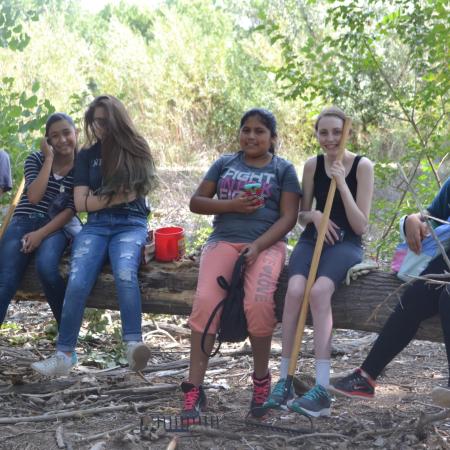
Restoring land and native plants is uplifting on its own but seeing the effects on our community’s youth has been most inspiring. The YMP includes everyone in our ecological and cultural stewardship programs with children and teens playing a prominent role. School participation brings many students into this landscape who have never previously visited and lack a meaningful connection to the land and its cultural uses. By planting native plants, researching traditional botanical practices, publishing their work in our field guide, and participating in field trips, students are discovering an enthusiasm for the land and their ancestors. Participants report reconnecting with their family lineage through grandmothers and aunts who are curanderas (healers) by asking questions about the plants they are researching. In this way, our young project participants are perpetuating cultural continuance of wild food and medicine knowledge and recognizing their role as advocates for the land that sustains these traditions. Students told us they felt pride in publishing cherished family traditions in the field guide as a resource for others.
In addition to restoring family connections to the land through botanical traditions, young people are developing important new perceptions of ecological and cultural connectivity to help us move through a future of climate changes that will undoubtedly affect life in profound ways. Younger students say they now feel responsible for the land. After planting shrubs and herbs, they visit with their families to check on plant progress. Parents tell us their children initiate conversations regarding the land as a living entity and plants as intelligent beings whose lives should be valued. YMP activities are helping to advance a renewed commitment to reciprocal restoration of land and culture on the local level. Our project has the potential to foster a new generation of ecological and cultural stewards who are developing the requisite knowledge and passion to spearhead new initiatives as environmental science professionals, sustainable land and water policy advocates, and leaders in cultural preservation.
“My experiences with YMP have been nothing short of incredible. I was fortunate to bring students on their Ecology and Herbalism Bosque Walks in 2018 and 2019 and they were fantastic…. The work they do is essential to the long term health of the Bosque and the community.” Jordy, High School Teacher of Biology, AP Environmental Science, Geography


